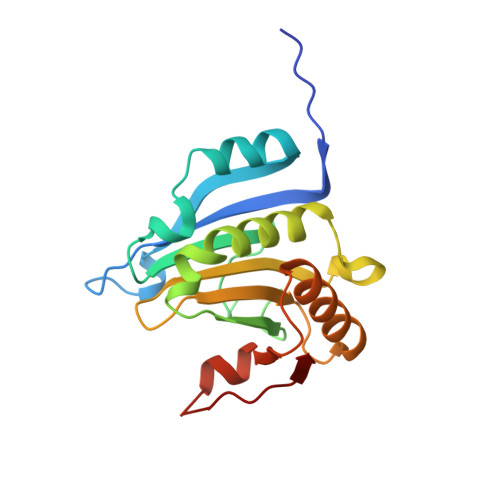Novel N7-Arylmethyl Substituted Dinucleotide mRNA 5' cap Analogs: Synthesis and Evaluation as Modulators of Translation.
Wojcik, R., Baranowski, M.R., Markiewicz, L., Kubacka, D., Bednarczyk, M., Baran, N., Wojtczak, A., Sikorski, P.J., Zuberek, J., Kowalska, J., Jemielity, J.(2021) Pharmaceutics 13
- PubMed: 34834356
- DOI: https://doi.org/10.3390/pharmaceutics13111941
- Primary Citation of Related Structures:
6YLR, 6YLT, 6YLV - PubMed Abstract:
Dinucleotide analogs of the messenger RNA cap (m 7 GpppN) are useful research tools and have potential applications as translational inhibitors or reagents for modification of in vitro transcribed mRNAs. It has been previously reported that replacing the methyl group at the N7-position with benzyl (Bn) produces a dinucleotide cap with superior properties. Here, we followed up on this finding by synthesizing 17 novel Bn 7 GpppG analogs and determining their structure-activity relationship regarding translation and translational inhibition. The compounds were prepared in two steps, including selective N7-alkylation of guanosine 5'-monophosphate by arylmethyl bromide followed by coupling with imidazole-activated GDP, with total yields varying from 22% to 62%. The compounds were then evaluated by determining their affinity for eukaryotic translation initiation factor 4E (eIF4E), testing their susceptibility to decapping pyrophosphatase, DcpS-which is most likely the major cellular enzyme targeting this type of compound-and determining their translation inhibitory properties in vitro. We also synthesized mRNAs capped with the evaluated compounds and tested their translational properties in A549 cells. Our studies identified N7-(4-halogenbenzyl) substituents as promising modifications in the contexts of either mRNA translation or translational inhibition. Finally, to gain more insight into the consequences at the molecular level of N7-benzylation of the mRNA cap, we determined the crystal structures of three compounds with eIF4E.
- Centre of New Technologies, University of Warsaw, 02097 Warsaw, Poland.
Organizational Affiliation:

















